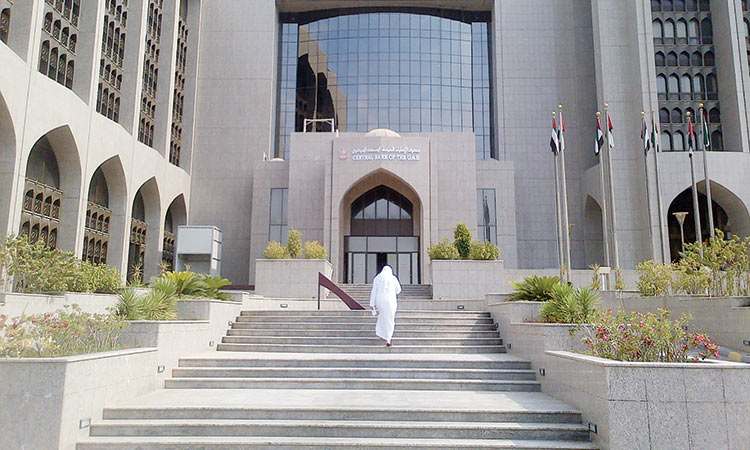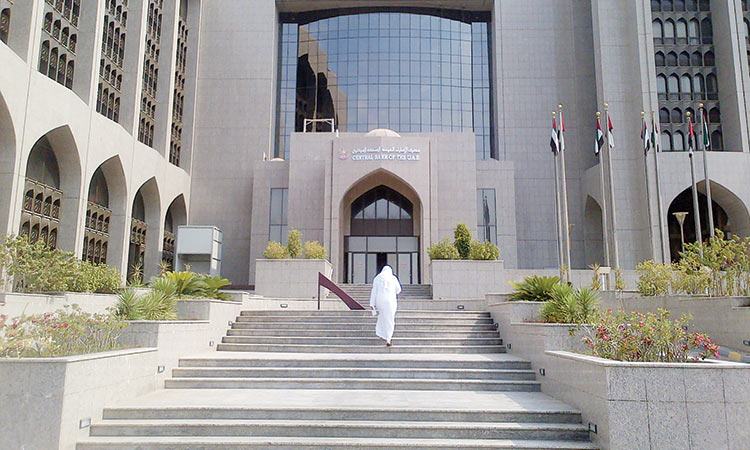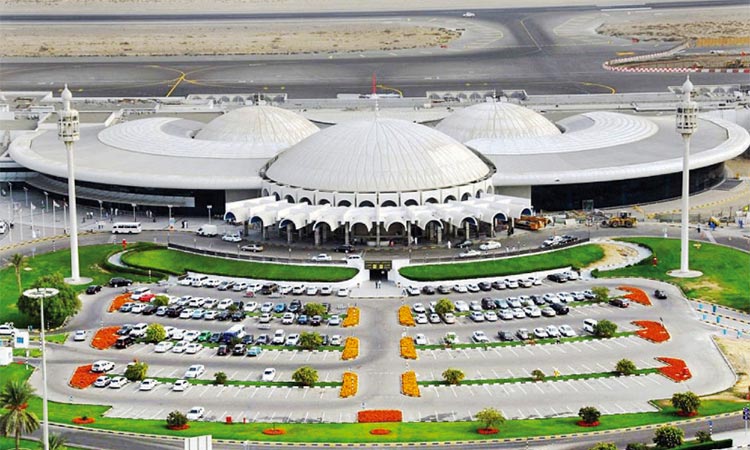National banks give Dhs745.6b in loan to business, industries

A man climbs stairs of the Central Bank of the UAE headquarters in Abu Dhabi. File/WAM
The apex bank’s figures showed that the two sectors saw a 4 per cent rise in cumulative credit balance to Dhs 745.6 billion at the end of June 2023 from Dhs717.1 billion at the end of December 2022.
National banks provide the most credit to the sectors, totalling Dhs825.9 billion at the end of June, or 90.3% of the combined credit balance of the two sectors.
Foreign banks have a much smaller share at 9.7 per cent or Dhs 80.3 billion.
The credit balance for the sectors from banks in Abu Dhabi was around Dhs367.4 billion as of the end of June, while banks in Dubai provided Dhs356.2 billion, and those in other emirates lent some Dhs102.3 billion to these sectors.
Out of the credit facilities worth Dhs 745.6 billion that these sectors obtained by the end of last June, traditional banks extended Dhs677.2 billion, accounting for 82 per cent, while Islamic banks provided about Dhs148.7 billion, representing 18 per cent of the total.
According to recent statistics from the Central Bank of the UAE, the country’s national banks increased their credit facilities for the business and industrial sectors by around Dhs28.4 billion in the first five months of this year.
The statistics also showed that the two sectors witnessed a 4 per cent rise in credit balance from national banks over five months, rising from around Dhs717.1 billion in December 2022 to Dhs745.5 billion in May 2023.
National banks increased their credit balance for the said sectors by Dhs8.2 billion in May 2023, a monthly increase of 1.11 per cent, which was a year-on-year growth of 3.3 per cent or Dhs23.9 billion, up from Dhs721.6 billion in May 2022.
National banks provide the most credit to the sectors, totalling Dhs825.6 billion as of May, or 90.3% of the combined credit balance of the two sectors. Foreign banks have a much smaller share at 9.7 per cent or Dhs80.1 billion.
The credit balance for the sectors from banks in Abu Dhabi was around Dhs370.1 billion as of the end of May, while banks in Dubai provided Dhs353.7 billion, and those in other emirates lent some Dhs101.8 billion to these sectors.
Out of the credit facilities worth Dhs825.6 billion that these sectors obtained by the end of last May, traditional banks supplied some Dhs679.8 billion, accounting for 82.3 per cent, while Islamic banks provided about Dhs145.8 billion, representing 17.7 per cent of the total.
According to earlier data issued by the Central Bank of the UAE (CBUAE), credit financing provided by the UAE national banks to the trade and industry sectors grew 6.1% YoY, or Dhs42.5 billion in the first three months of 2023,
The statistics showed that the cumulative balance of credit provided by national banks to the two sectors amounted to Dhs735.2 billion at the end of March compared to some Dhs692.7 billion in the corresponding period last year.
According to the apex bank’s data, the cumulative balance of credit provided by national banks to the two sectors increased on a monthly basis by 0.1 percent, or Dhs500 million, from Dhs734.7 billion in February.
Financing provided by Emirati banks accounted for 90.1 per cent of the total credit granted to the two sectors, which stood at Dhs815.9 billion by the end of March, with foreign banks based in the country accounting for 9.9 percent or Dhs80.7 billion.
The credit financing for the two sectors in Abu Dhabi reached Dhs673.6 billion, or 82.6 per cent by end of January, with the Sharia-compliant banks comprising 17.4 per cent thereof, or some Dhs142.3 billion. The same amounted to Dhs384.7 billion in Dubai and Dhs100.6 billion in other emirates.
The Central Bank of the UAE (CBUAE) recently issued its Financial Stability Report for 2022. The report provides a comprehensive assessment of the stability of the UAE financial system, which remained resilient throughout 2022 despite global headwinds, and the banking sector being well capitalised with adequate liquidity buffers.
The report discusses global and local macroeconomic conditions, domestic asset markets, and provides a detailed assessment and evaluation of the UAE banking system. This is in addition to outlining the variety of tools deployed by the CBUAE as part of its macroprudential mandate, as well as its assessment of non-bank financial institutions and the broader financial infrastructure. It also contains an analysis of other important developments across the UAE financial sector such as digitalisation and sustainability, reflecting the pivotal role the sector continues to play in bolstering the competitiveness and resilience of the UAE’s economy.
The report highlighted that during the year, the UAE benefitted from favourable domestic conditions, which insulated the financial system from adverse global economic trends. As a result, the risks impacting the financial system remained within acceptable boundaries and were largely unchanged from the previous year.
The report also indicates that the UAE’s real GDP growth accelerated during 2022 due to a robust recovery in non-oil GDP and a sizable expansion of oil GDP. This comes at a time when the global economy experienced a slowdown in 2022, with external risks remaining elevated in an environment characterised by higher inflation, tightening financial conditions and continued geopolitical tensions.
The UAE’s banking system also benefitted from local macroeconomic recovery in 2022, with credit growth, particularly private sector loans, having rebounded during the year and the profitability of the banking sector exceeding pre-pandemic levels due to higher interest margins and lower impairment charges.
In relation to the CBUAE’s stress test exercise, the report affirms the resilience of UAE banks against the risk of stagflation and market uncertainties. The exercise showed that the banking sector obtains sufficient capital and liquidity to withstand severe, adverse hypothetical scenarios whilst continuing to support the economy by maintaining credit supply to UAE borrowers.





